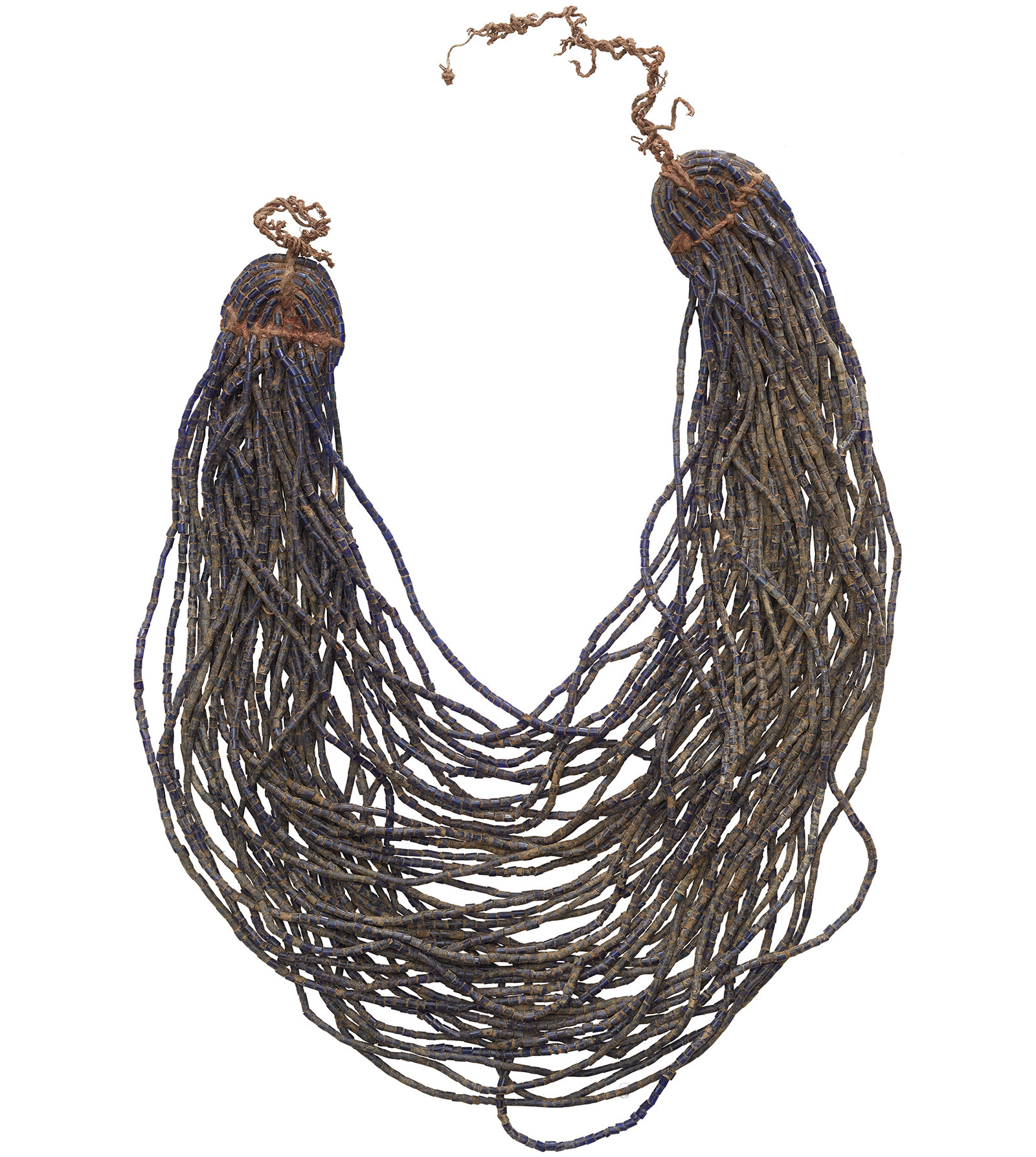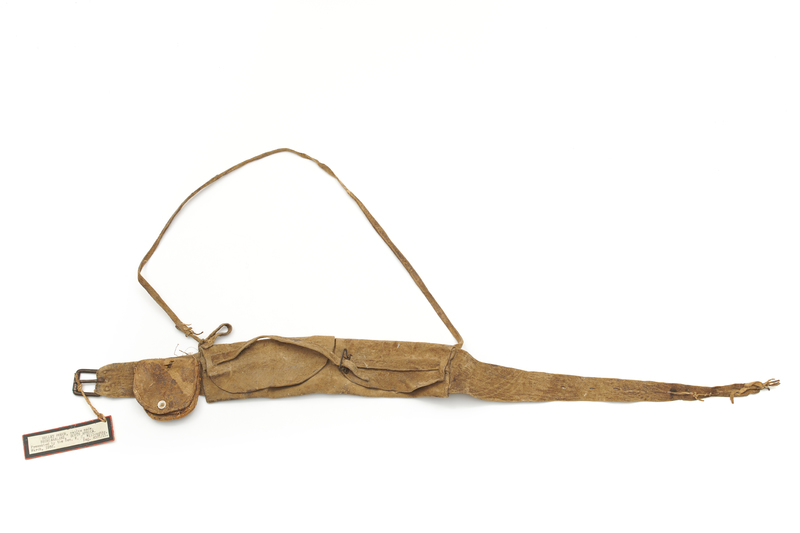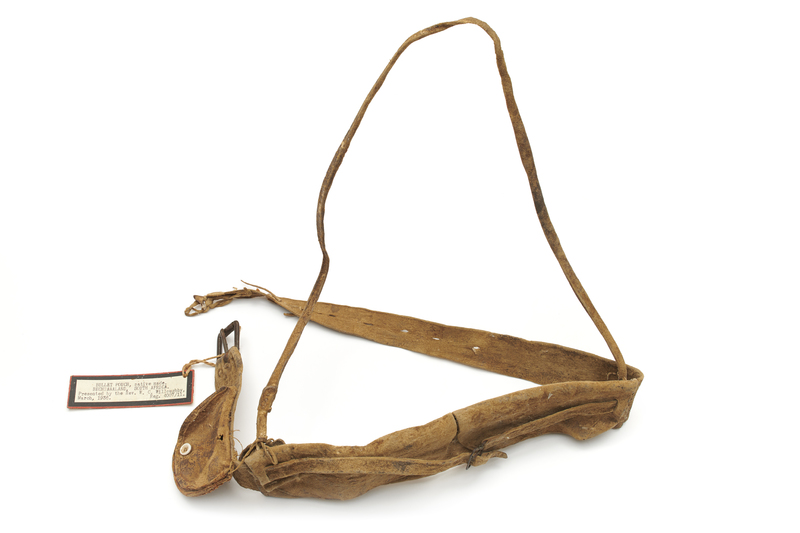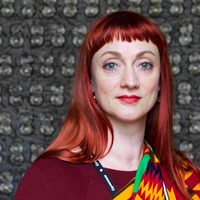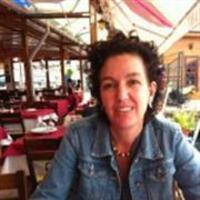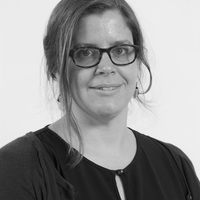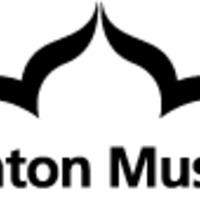Bullet Pouch; Belt; Lebantê
Item
Title
Bullet Pouch; Belt; Lebantê
Creator
Unrecorded
Description
Physical Description: Hide bullet-pouch in the form of a belt. It has two long and one short purse-like pockets, and a long loop of hide string. It fastens with an iron buckle. [Royal Pavilion & Museums, 2019]
Contextual Description: "Copy of a European bullet pouch." [Comments made by Winani Thebele and Scobie Lekhuthile during visit to Royal Pavilion & Museums, Brighton & Hove, February 2019.]
Accession Register Entry: Skin bullet-pouch in the form of a girdle having two long and one short purse-like pockets, with iron buckle. Bechuana. [Herbert Samuel Toms, 1936]
Contextual Description: Lebante comes Dutch/Germanic word for belt. TS comments
Contextual Description: 01:00:35 [Discussion of how it is worn]I think one of those horns meant for gun powder would like attach somewhere here. He remembers that the old flintlock it works with the powder, and then sometimes you can even use matches to actually get it to charge. The old ones had a holder where you attached the flint, and then when the thing goes there it makes a spark and then it will ignite the powder in there.
[TN mimes using the gun]
RHH: What were these used for?
[discussion of all the game animals that were common there in the 1940s/50s] Transcription by KL of MAC_BB_20190817_RPM3 SL Interview with Tshupo Ntono, Village Elder, Language: Setswana with English translations by SL, 2019
[TN mimes using the gun]
RHH: What were these used for?
[discussion of all the game animals that were common there in the 1940s/50s] Transcription by KL of MAC_BB_20190817_RPM3 SL Interview with Tshupo Ntono, Village Elder, Language: Setswana with English translations by SL, 2019
Contextual Description: SL 20:58
but cannot we are looking back how many how many years ago is this yeah
NS 21:12
yeah because in the photos
SL 21:14
and back then we were just like basarwa we were making things out of leather we were making crude belts like this and taking pride in that...
GK 21:24
is that a belt
SL 21:25
yeah it's a belt with a little
WT 21:30
yeah so what what is that? Well what about
SL 21:35
what are they calling it
NS 21:37
skin bullet pouch in the form of a girdle so yes it goes around although again belt is maybe better than girdle
SL 21:43
and only bangwato or some kind of motswana will have a dream of you know, having something like that because they've seen the white man and have carried a gun for him. So next day when I go home, I try to fashion you know, make my own.
WT 22:02
so what what are you going to call that in Tswana?
22:09
It does feel... lebante and also for putting things inside.
SL 22:16
Now...very good to use that term. this is something that we didn't have in our, in our tradition and even when it was introduced, I don't think we ever bothered ourselves to come up with an attempt
WT 22:29
somebody's innovation
SL 22:30
so it has been given a bastardised name. Just call it Lebante from the belt Yeah.
WT 22:38
Ah lebante lebante the belt. Belt
SL 22:48
bante t e
22:52
What about the other people's...if Lebante is just the caption and then when there is some word we are going to put to explained further to encompass the other purpose of holding things inside
SL 23:06
a no I give it like [???]. Well, it's a hunting belt. So [gare le lebantê le letso]
The above notes are from a transcription by Kathleen Lawther of a discussion between Gase Kediseng, JoAnn McGregor, Nicola Stylianou, Scobie Lekhuthile and Winani Thebele which took place at the Khama III Memorial Museum on the 5th of August 2019. To listen to the full recording please follow the link below.
but cannot we are looking back how many how many years ago is this yeah
NS 21:12
yeah because in the photos
SL 21:14
and back then we were just like basarwa we were making things out of leather we were making crude belts like this and taking pride in that...
GK 21:24
is that a belt
SL 21:25
yeah it's a belt with a little
WT 21:30
yeah so what what is that? Well what about
SL 21:35
what are they calling it
NS 21:37
skin bullet pouch in the form of a girdle so yes it goes around although again belt is maybe better than girdle
SL 21:43
and only bangwato or some kind of motswana will have a dream of you know, having something like that because they've seen the white man and have carried a gun for him. So next day when I go home, I try to fashion you know, make my own.
WT 22:02
so what what are you going to call that in Tswana?
22:09
It does feel... lebante and also for putting things inside.
SL 22:16
Now...very good to use that term. this is something that we didn't have in our, in our tradition and even when it was introduced, I don't think we ever bothered ourselves to come up with an attempt
WT 22:29
somebody's innovation
SL 22:30
so it has been given a bastardised name. Just call it Lebante from the belt Yeah.
WT 22:38
Ah lebante lebante the belt. Belt
SL 22:48
bante t e
22:52
What about the other people's...if Lebante is just the caption and then when there is some word we are going to put to explained further to encompass the other purpose of holding things inside
SL 23:06
a no I give it like [???]. Well, it's a hunting belt. So [gare le lebantê le letso]
The above notes are from a transcription by Kathleen Lawther of a discussion between Gase Kediseng, JoAnn McGregor, Nicola Stylianou, Scobie Lekhuthile and Winani Thebele which took place at the Khama III Memorial Museum on the 5th of August 2019. To listen to the full recording please follow the link below.
Publisher
Making African Connections
Date
Pre 1899
Type
PhysicalObject
Format
Whole: 85 mm x 940 mm
Animal skin; Iron
Identifier
R4007/11
Source
Collected by Reverend William Charles Willoughby, a Christian missionary, in what was then the Bechuanaland Protectorate (1885-1966). It is now the Republic of Botswana, having gained independence from Britain in 1966.
From 1889-92 Willoughby was pastor at Union Street Church, Brighton (now The Font pub). From 1893 to 1898 he worked for the London Missionary Society in Bechuanaland. He assembled this collection of objects during this period. This was a period of social and technological changes and these objects represent traditional lifestyles and skills, rather than the contemporary lives of the people Willoughby met.
Willoughby's collection was loaned to Brighton Museum in 1899 when he returned to the UK. The loan was converted into a donation in 1936, and accessioned as acquisition R4007.
Some objects were re-numbered with the WA (World Art) numbering system in the 2000s. These numbers have been reverted to the original R4007/... numbers where possible for consistency in 2019.
From 1889-92 Willoughby was pastor at Union Street Church, Brighton (now The Font pub). From 1893 to 1898 he worked for the London Missionary Society in Bechuanaland. He assembled this collection of objects during this period. This was a period of social and technological changes and these objects represent traditional lifestyles and skills, rather than the contemporary lives of the people Willoughby met.
Willoughby's collection was loaned to Brighton Museum in 1899 when he returned to the UK. The loan was converted into a donation in 1936, and accessioned as acquisition R4007.
Some objects were re-numbered with the WA (World Art) numbering system in the 2000s. These numbers have been reverted to the original R4007/... numbers where possible for consistency in 2019.
William Charles Willoughby
Botswana, Southern Africa, Africa
1893-1898
Space/Place
Botswana, Southern Africa, Africa
Cultural Group: Tswana
Rights
Creative Commons Attribution-ShareAlike 4.0 International
Item sets
Linked resources
Filter by property
| Title | Alternate label | Class |
|---|---|---|
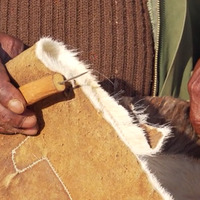 Leatherwork Leatherwork |

